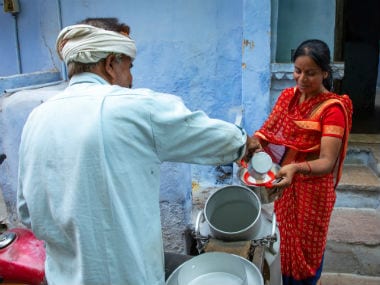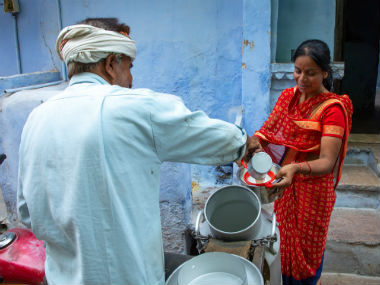Lactose intolerance is one of those pesky disorders that can be different for different people: while some people can eat yoghurt without any problems, others can’t even digest hard cheeses that have no whey left in them. While most of us have grown up on a diet of milk and milk-based desserts, research shows that few Indians have lactase persistence — or the ability to produce an enzyme to digest milk sugar (lactose) — beyond childhood. [caption id=“attachment_7698671” align=“alignleft” width=“380”]
 Representational image. Image source: Getty Images.[/caption] The implication: Many of us may be lactose-intolerant, and not even know it.
Representational image. Image source: Getty Images.[/caption] The implication: Many of us may be lactose-intolerant, and not even know it.
What is lactose-intolerance?
Lactose is a sugar in milk sourced from animals, albeit goats’ milk has less lactose than cows’ milk. When we consume animal milk, our intestines produce lactase, an enzyme that breaks this sugar down into bits the body can use for energy (hydrolysis). As we grow up, 65% of us around the world produce less lactase than we did as babies. The result: some of us can get away with taking a little bit of milk in our tea, coffee, and the occasional ice-cream (lactose sensitivity) and some of us are in agony even if we take a tablet that uses milk powder as a filler.
How do I know if I have lactose intolerance?
Your body will give you signs: when lactose isn’t digested in the small intestine, it passes into the large intestine, where gut bacteria feast on it. The result: gassiness, bloating, stomach ache, more-than-usual farting, general discomfort and sometimes diarrhoea. To be sure, there’s a whole spectrum of lactose intolerance; each person with this condition needs to figure out how much milk they can tolerate by trial and error. Depending on the strength of the signals your body send you, you may find out quickly if your tummy reacts badly to milk or you could go on for years without pinpointing the cause of your tummy trials. Doctors can also run tests to confirm your suspicion. Here’s one you can try at home, with a simple blood-sugar testing kit: 1. Measure your blood sugar level on an empty stomach. 2. Drink a glass of plain milk - without sugar or artificial sugar. 3. Wait two hours before taking your blood sugar reading again. If you notice a rise in blood sugar, that indicates that your body might be able to use the sugar in milk. If not, you likely have a low tolerance for milk sugar. To be sure, most people with lactose intolerance have minor symptoms. They can go through life without substituting milk in their day-to-day food.
What next?
There’s no way to increase the production of lactase in the body as of now, but thankfully there are lactase tablets available. If your lactose intolerance is severe, pop one before enjoying your favourite ice-cream or kheer. The tablets won’t solve the underlying issue, but they will give you a momentary reprieve from bloating and other symptoms. There are also several milk alternatives in the market now. Try almond milk or rice milk for their yummy taste and a bonus shot of vitamins and minerals. Milk is an important source of dietary calcium; if you can’t digest milk, make sure to get your calcium from other foods like chia seeds, cheese and daals, or from supplements. For more information, please read our article on Lactose Intolerance _._ Health articles in Firstpost are written by myUpchar.com, India’s first and biggest resource for verified medical information. At myUpchar, researchers and journalists work with doctors to bring you information on all things health.
)